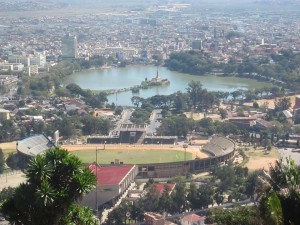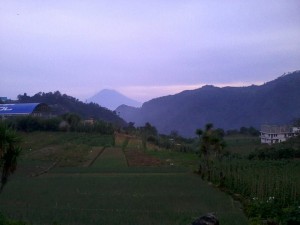the West vs. the Rest
In our society, the peoples of the world are generally grouped in two categories. One category places certain countries and chunks of the world as better off in indexes of well being. These countries are “developed,” “Westernized,” “modern,” or the “Global North.” On the other half, are is the “undeveloped,”non-Westernized,” “traditional or primitive” or Global South.

“Addictive Economies and Coal Dependency: Methods of Extraction and Socioeconomic Outcomes in West Virginia”
The increase of the world population is used as an important factor in the reduction of resources. The larger or more dense the settlement, the more likely it will be used as an example for adding to environmental pollution and destruction; so, the landscape of urban settlements often stands against rural settlements to exemplify the magnanimity of the impact being made. Robert Pavela and Gregory Purdue however, focus on economic livelihood as impacting the environment.
Population growth is not the sole factor to blame for pollution of the environment. Pavela and Purdue collected data from towns in West Virginia where coal mining was or was not a dominant industry. For over a century, coal mining has been a large force in West Virginia, with new technologies improving the way efficiency with which coal is extracted. Pavela and Purdue found a positive correlation between coal mining as a major industry and higher poverty levels in West Virginia. In coal mining towns, laborers are locked into boom and bust cycles of supply and demand. Dependence on economic livelihood drives the need to use natural resources.
West Virginia’s case can also be applied to towns around the world afflicted by the “resource curse” — where nutrient rich regions have high poverty levels. These areas are often seen as “backward” or more “traditional,” but modernization is an ongoing process. Use of and improvements in technology for example, have affected labor and in turn the economy in regions big and small. Power structures play an important role in the divisions between rich and poor.
“The Anti-Politics Machine”
Many nongovernmental organizations and international governmental organizations establish themselves in countries with the goal of sustainable development. However, their attempts at development are at times ignorant of both what the local population wants and needs, and the impacts of addressing local, state, and global interests. James Ferguson and Larry Lohmann look at the Basotho in Lesotho, where NGOs and IGOs like the World Bank, UNDP, and USAID have made a presence. Their attempts at community development, strengthens state bureaucracy and has a major affect on politics rather than giving more autonomy to locals.Development projects are politically charged. Physical infrastructure brings peripheral towns in closer contact with the state center and control of natural resources changes Ferguson and Lohmann indicate that the relationship between developmental programs and the areas

being “developed” should be reassessed, particularly because the country plays a larger role in industry and mining than is said. .
Descriptions of Lesotho have included the words “traditional,” “isolated,” and “rural,” words in which ideals of primitivity are connected. Perceptions of primitivity create a division between peoples. The non-primitive are developed and have taken a role of environmental stewardship, whereas the primitive are ignorant of their affect on the environment. The ethics of developmental programs are questionable because interests that are promised to be represented are not always represented. Similarly, this article also draws on the importance of ethnoecology in the representation of the local’s point of view of the environment and management.
In just one city, all of terms can be combined. Some regions may have certain characteristics shared with another such as demography, education levels, or civil strife, but every region is shaped differently. The issues with these terms are they overlook dynamic processes at local, national, and international levels. Their popular use solidifies their acceptance and assumption as an identity.
“Excerpt from Friction: An Ethnography of Global Connection”

The interactions of people from different states and societies is often feared to result in a homogeneous society. Anna Tsing argues that globalization has been around for thousands of years and is a process that directly and indirectly affects regions of the world. Tsing’s data expounds from previous research in Indonesia to make a global reference. She found even cultures distanced from groups of people were being shaped by local or regional processes. Cultures are constantly reproduced and reinvented in their domestic and “long distance” interactions. She calls these interactions friction: “the awkward, unequal, unstable, and creative qualities of interconnection across difference.”
Often, smaller, peripheral or local states are seen as only being influenced, rather than influencing. Globalization does not reflect one superior world cycle. Several cycles are at work is a force of the regional to the global. These local regions have power of their own. Tsing urges global processes to be seen not as a smoothly uniform entity, but as several parts that move against each other causing friction. Cultural frictions are integral to productions like deforestation and conservation. Without the production of deforestation there would be no conservation.
Like Taylor and Buttel, Tsing questions the use of the term “global” to define environmental problems. What is a problem to one region may not be felt heavily by another region. Or, the “problem” may not be perceived as a problem.
Dualistic shapeshifters
Dualistic terms can be shaped by ethnoecologies and romanticized nature. Ethnoecology: is a view of ecology from the native’s lens. In “A View from a Point” by Virginia Nazarea, uses an ethnoecological approach to explain the importance of the local perspective in environmental management. Using a local point of view, the approach to a “problem” and solution will differ.

“A View from A Point: Ethnoecology as Situated Knowledge”
This work addresses the interpretation of cultural knowledge. When it comes to science, often the “Western” point of view is given more validation than perspectives from the rest of the world. Virginia Nazarea discusses the role ethnoecology has played in the past and the role she hopes it will play in the future. The discipline focusses on the local perspective and emphasizes that this perspective is just as if not more valuable than the West’s. Rather than just documenting local knowledge, Nazarea would like to see ethnoecologists implement local knowledge into action. Ethnoecology gives validation to the native’s point of view as legitimate for their given environment. The point of view with which one looks at environmental matters changes the narrative that is told or knowledge that is spread. Similarly, Nazarea emphasizes that a point of view is “fixed.” Even if two peoples are looking at an image or an environment, there will be different interpretations or constructed landscapes.
This can have implications towards any centralized or non-local implemented structures of environmental management. Ferguson and Lohmann’s “Anti-Politics Machine” underscores that the point of view instituted by international development agencies in Lesotho are coming from the agencies. Their point of view is a shared image of the country as “underdeveloped” and needing aid in order to “develop.” Nazarea’s work is important because local knowledge should not be undermined as ignorant in human environment relations. People have access to shared histories, observations, and interactions with their environment that provide unique insight into the world around them.
A romanticized view involves rose colored glasses where, nature is constructed as a peaceful, passive, and innocent space from which humans have advanced. Romanticizations also influence how nature is approached as a means to forest management. A hands off or utilization of agriculture may be the valued approach to management and conservation.
“Endangered Forests, Endangered People: Environmentalist Representations of Indigenous”

Environmental “facts” are guided by past research. That research however, can be based on biases and projections of information rather than supported empirical data. J. Peter Brosius gathers information from ethnobotanist Wade Davis and environmental activist Thom Henly. They did research in the the Western and Eastern Penan of Sarawak, located in Malaysia. Brosius found that the researchers juxtaposed information from the Eastern Penan to the Western Penan. Their conclusions were also guided by romanticized notions of indigenous peoples. In the West, scientists had made more of an impact. The region consisted of a smaller group of people than the East. In the East, the presence of the researchers affected their perceptions of the environment such that their vocalizations of the forest deforestation began to concern the loss of medicinal plants even though medicinal plants were never an important part of their society.
Sources considered to be reputable may misinterpret data, separating images or people into categories that have been constructed by themselves. The categories in the case of Penan were not distinguished by the two regions with different peoples formed by different social structures and environments, but the West vs. the rest. Fairhead and Leach too discuss the importance of questioning data sources and their interpretations.
“A Cyborg Manifesto: Science, Technology, and Socialist Feminism in the Late Twentieth Century”

Dualisms such as culture and nature are commonly portrayed as two irreconcilably distinct realms. Donna Haraway approaches dualisms by illustrating a world of cyborgs with a political-scientific approach. Haraway concentrates on the role of the cyborg in medicine, politics, and human and animal relations. Cyborgs can also be part male and female. Sexual reproduction is no longer the sole means of creating life and humans and animals represent each others interests. Resistance forms against the idea of technology taking control of the human world. While Haraway finds cyborgs to be antagonized, particularly by “American feminists and socialists,” she argues the cyborg acts out of second nature; cyborgs are not so unnatural. These resisted, yet accepted, combinations reflect power relationships that are constantly changing in form and definition. Haraway describes cyborgs as “unfaithful” because at any time one part can dominate the other.
Haraway favors the acceptance of cyborgs and argues they provide insight into culturally constructed dominations. What may have been stark binaries have been blurred such that what is natural comes to embody humanity and humanity the the natural. They function in an interdependent relationship that can be viewed as tumultuos or supportive.
Vilaça presents dualisms like culture and nature as bendable constructions. Ortner also calls for the re-evaluation of gender and culture to nature. While she does imply binaries exist, these binaries are constructed and vary. The Great Chain of Being, with human above physical attributes to nature is broken.
“Chronically Unstable Bodies”
Aparacida Vilaça explores the meaning of being human from her own ethnographic data. She presents the Wari’ of the Brazilian Amazon as a society whose definition of human is not refined to homo-sapiens. The name Wari’ extends to animals, plants, and inanimate objects. The body can be transformed to the effect that the form one assumes oneself to have can be perceived differently by someone else.
The work can be looked at in terms of the “Great Chain of Being,” where humans are depicted on a higher hierarchal level than animals, plants, and inanimate objects. This hierarchy falls away from the Wari’ as the power to transform is not distinctive to the Wari’. Similarly,Vilaça addresses the culture-nature dichotomy where culture is seen as separate and at times dominate to nature. Her article implies that culture and nature are constructed and as so, begs the question of where the distinction between culture and nature lies.
When one questions what it means to be human, nonhumans can be given “human” characteristics, which elicits a higher moral consideration. Humans and the environment can both beth be looked at as dynamic processes that are subject to the other. Julian Steward’s cultural ecology makes a similar connection. The environment changes just as humans change. Neither would stop changing if the other did not exist. Ideas and practices of intervention, preservation, conservation, and manipulation of the environment should be considered in a different light. The form that is presented to the eye –whether it be a crystal clear body of water, a status report on deforestation, or farmer — is not a form that should be accepted as a single image.
“Anthropology, Culture, Environmentalism”
Kay Milton discusses the concept of culture and the role that anthropology and environmentalism play in that definition and with each other. Sub-genres of cultural anthropology are compared with each other. Milton contends that anthropology is not only the study of culture, but also the study of the environment. Milton does not commit to a definition of culture. She compares culture to a black box, where the contents of the box are unseen and everything can be engulfed. As such, anthropology can play an important role in environmental discourse.

She provides a spectrum of biosphere peoples and ecosystem peoples. At one end of the spectrum are ecosystem peoples whose livelihoods are tied to their surroundings. On the other end of the spectrum are biosphere peoples who collect their resources from other regions. Biosphere peoples usually perceive ecosystem peoples as tied to nature. Looking closer at biosphere and ecosystem peoples, the connections or disconnections of humans and nature as perceived by many environmentalists fall apart.
Because there is a culture and nature dichotomy, from afar anthropology and environmentalism may seem to focus on separate images. Milton’s article is important in seeing that anthropology is not an anthropocentric discipline. Similarly, ecology and other disciplines based on the “natural” world have close ties to humans. This work explores a similar ideology with “Chronically Unstable Bodies” where there is no fine line between culture and nature. The relationship between culture and nature can be explored through each of the articles explored on the site and in the course.